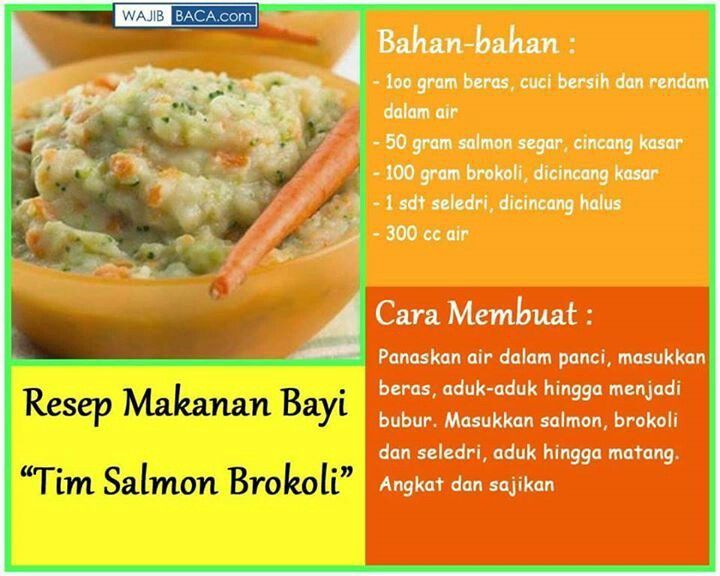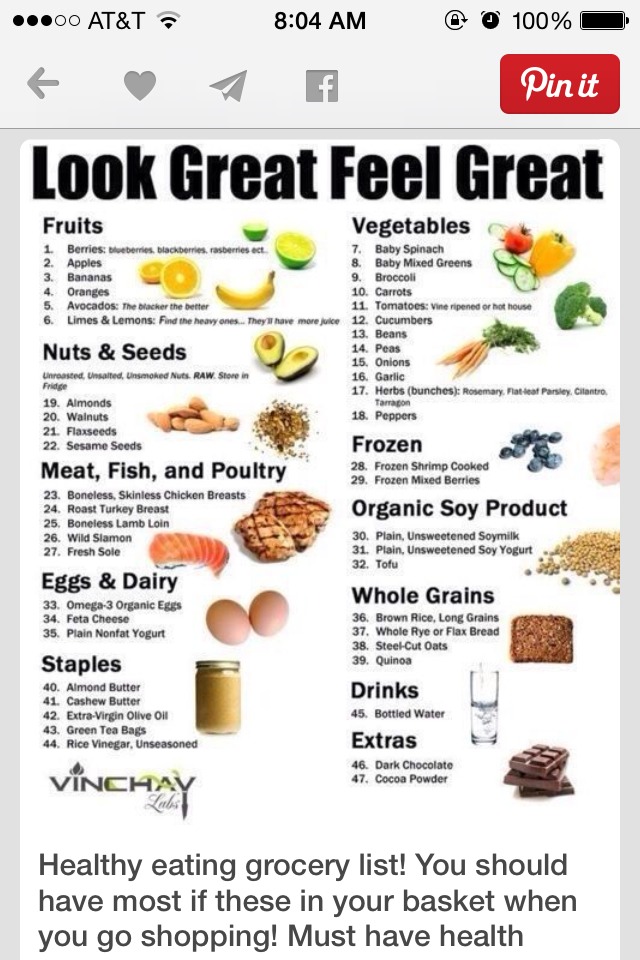Baby feeding amounts breast milk
How Much Breast Milk Should a Newborn Drink
Learn how much breast milk a baby actually drinks, and how to initiate, build, and maintain a strong milk supply.
Share this content
Congratulations on making the decision to breastfeed your newborn, Mama! We know you’ll have a lot of questions as you become adjusted to life with a little one, and we’re here to help you ease into it all. After your baby is born, your pregnancy hormones will dissipate. This allows your milk-making hormones to officially kick into high gear. Beginning breastfeeding within the first hour or so following your newborn’s birth helps provide valuable colostrum from the moment your baby first latches on to feed. Colostrum, a thick, immune-building and antibody-rich early breast milk, is immediately available during and sometimes even shortly before the first phase of a mother’s lactation journey: The Initiation Phase.
The Initiation Phase | First 24 Hours
The first five days after birth, while your body learns to make larger quantities of milk and your baby learns to feed, are extremely important in setting up the rest of your breastfeeding journey - but don’t expect your supply to be plentiful immediately. On average, your baby will consume about a teaspoon of colostrum per feeding in the first 24 hours, which is ideal for his or her tiny stomach. In fact, your baby’s stomach is only about the size of a cherry on day one and holds just 5 – 7 mL or 1 – 1 ½ teaspoons of breast milk during each feeding! Don’t worry – it’s normal for babies to lose some weight after being born, but your doctor and nurses will be carefully monitoring your newborn to make sure they are healthy.
In addition to the nutritional and wellness benefits of colostrum for your baby, removing it by pumping or feeding tells your body that your baby will be getting hungry soon, so larger volumes of milk must be produced to meet your baby’s growing needs. By day 3, your newborn’s stomach will have grown to about the size of a walnut. This means that the amount of breast milk that a baby drinks will have increased exponentially in just a short time, with their tummy now able to hold between 22 – 27 ml or ¾ - 1 ounce per feeding. Feeding your newborn at least 8 – 10 times per day in the first week after birth helps to promote a healthy and ample milk supply going forward.
Feeding your newborn at least 8 – 10 times per day in the first week after birth helps to promote a healthy and ample milk supply going forward.
The Secretory Activation (or Building) Phase | 24 Hours to 2 Weeks
This phase happens when your body switches from producing colostrum to releasing more mature milk to meet the evolving needs of your growing newborn. While the timing is different for each mom, this typically occurs in the 24 – 120-hour range after birth. However, it can take longer for some moms, in which case you should work with your doctor or nurse to ensure your newborn is receiving the correct amount of nutrition until your milk volume increases. Often by the end of the first week, mothers are producing about 500 mLs or 16 ½ ounces of milk per 24 hours. Also around the 1 week mark, your baby’s stomach will have grown to about the size of an apricot with the capability of holding around 45 – 60 mL or 1 ½ - 2 ounces of milk
By about 2 weeks old, babies will generally be back up to their birth weight and will typically have at least 6 wet diapers and 3 or more diapers with bowel movements per 24 hours.![]() Also around this time, your baby’s stomach has grown to about the size of an egg and can now hold between 80 – 150 mL or 2 ½ - 5 ounces per feeding. Your newborn will likely gain about 4 – 7 ounces per week in the first month and as you enter the Maintenance Phase of your lactation journey.
Also around this time, your baby’s stomach has grown to about the size of an egg and can now hold between 80 – 150 mL or 2 ½ - 5 ounces per feeding. Your newborn will likely gain about 4 – 7 ounces per week in the first month and as you enter the Maintenance Phase of your lactation journey.
The Maintenance Phase | 4 Weeks to 12 Months
From the 4-week mark through the time that additional foods are introduced into your baby’s diet at about 6 months of age, your milk supply won’t change much if your feeding and pumping routine remains consistent. Because new foods will eventually replace some of the breast milk in your baby’s diet starting around 6 months old, your supply may start to gradually decrease at this point unless you’re pumping to build a stash. Babies usually gain about 4 – 7 ounces per week, or 1 – 2 pounds per month, for the first 6 months. This usually then tapers down to about a pound per month from roughly 6 – 12 months of age.
It is important to remember that breastfed infants take fewer but longer feeds as they get older, though their daily consumption remains about the same.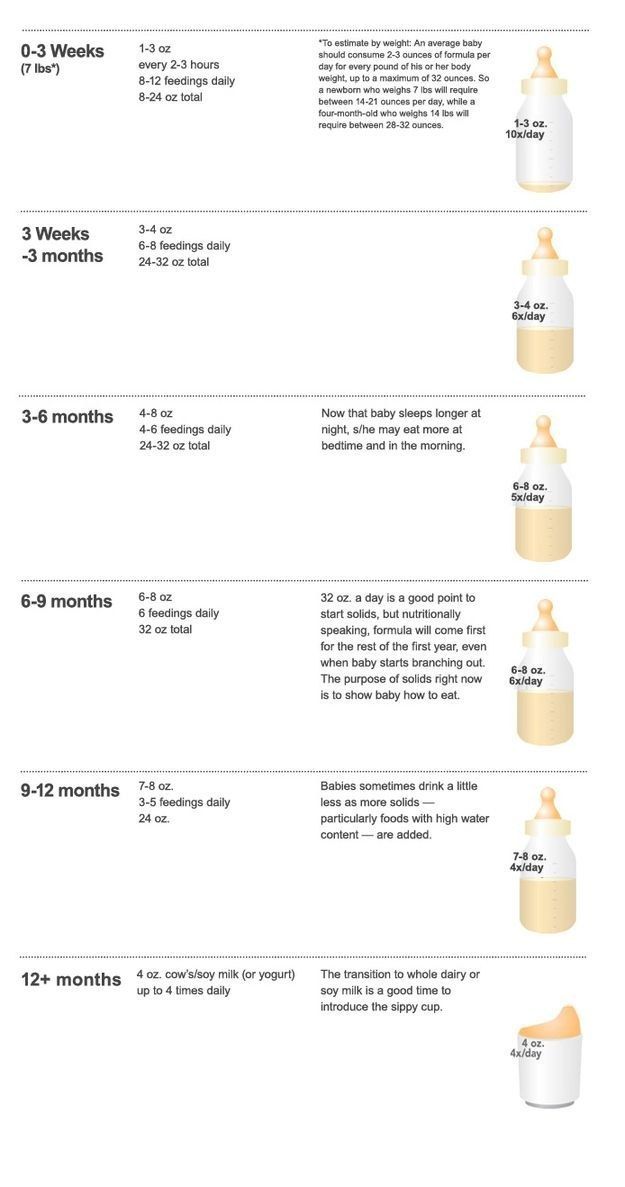 This means that your little one may have less nursing sessions through the day, but will typically nurse for a longer period when they do. During the 3 – 6-month-old period, babies start to grow more slowly, so they don’t need a lot more milk at this time.
This means that your little one may have less nursing sessions through the day, but will typically nurse for a longer period when they do. During the 3 – 6-month-old period, babies start to grow more slowly, so they don’t need a lot more milk at this time.
So, How Much Breast Milk Does a Baby Actually Need?
We try to make feeding as simple and straightforward as possible, but that’s not always easy. Every baby is different and, in most cases, there isn’t a specific intake amount that an infant must meet each day. Here are a few guidelines for what to expect:
- The amount of milk that a baby drinks from a single breast ranges anywhere from 30 – 135mL, though the average volume is about 75 ml.
- Your number of breastfeeding sessions per day may be anywhere from 4 – 13, depending on his or her appetite and how much milk is removed from the breast during each session.
- A single breastfeeding session can express anywhere from 54 – 234 mL of milk.
- Boys typically drink about 831 mL daily while girls usually drink about 755 mL each day.

With that in mind, the range of daily milk intake of growing, exclusively breastfed infants is anywhere from 478 – 1,356 mL. So, answering the question of how much breast milk a baby needs isn’t so easy. While guidelines like the above help give a little bit of context around your feeding experience, every mom, every baby and every breastfeeding journey is unique. As long as both mom and baby are happy and healthy, you’re doing things right!
Newborn Feeding Chart
Looking for more breastfeeding resources? Download our printable feeding and pumping log - available in English or Spanish! - for easy tracking of your baby's feedings and your pumping sessions.
You can also download our Medela Family app for personalized tracking of all your unique breastfeeding goals right from your smartphone, or take a look at the handy resources below:
What is the Range of Normal?
Baby feeding chart - How many ounces of breastmilk should a baby eat?– Nested Bean
Feeding is one of the first activities you'll do with your little one, and you'll spend lots of time doing it as a new parent! Whether your baby is formula-fed, breastfed, or eating solid foods, feeding them the right amount is vital for their development.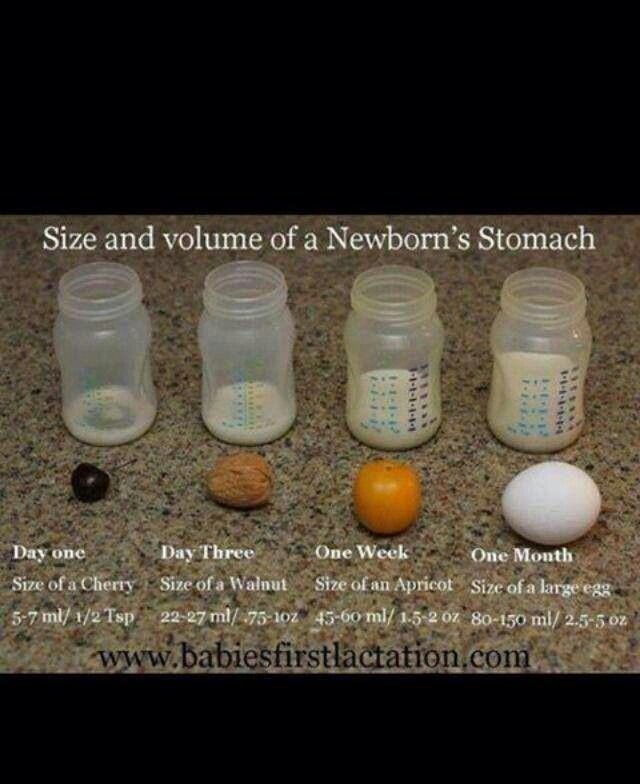
Read on to learn more about how much breast milk, formula, and solid food you need to keep your baby healthy at any age.
From the experts: baby feeding
'It is important to remember all babies are different―some like to snack more often, and others drink more at one time and go longer between feedings. However, most babies will drink more and go longer between feedings as they get bigger and their tummies can hold more milk.'
- Sanjeev Jain, MD, Healthy Children
In this article:
-
Breast milk feedings and amounts by age
-
Formula feeding and amounts by age
-
Solid food feedings and amounts by age
-
Baby feeding FAQ
Breast milk feedings and amounts by age
Though breastfeeding has a whole host of benefits, from providing bonding time with your baby to giving them all the nutrients they need to grow and develop, it can be tricky to know how much they're actually drinking if you aren't pumping!
If you're feeding your baby directly from the breast, they'll likely want to eat little and often at first - every 1-3 hours for the first few weeks. As they get older, this will decrease to longer feeds every 2-4 hours, and you may include a stretch of time between feedings at night as your baby sleeps.
As they get older, this will decrease to longer feeds every 2-4 hours, and you may include a stretch of time between feedings at night as your baby sleeps.
Once they reach 6 months of age and you start introducing solid food into their diet, the amount of breastfeeding and ounces of milk per feeding will vary depending on how much food they're eating.
If you're choosing to primarily pump breast milk, you'll likely find it a lot easier to figure out just how much milk your baby is getting. However, this doesn't mean you know the correct amount for each age! To help you out, we've created a table stating how much breast milk to give your baby and how often:
| Age | Time between feedings | Ounces per feeding |
| 0-1 Month | 2-3 hours | 1-3 ounces |
| 1-3 Months | 3-4 hours | 3-4 ounces |
| 3-6 months | 4-6 hours | 4-8 ounces |
| 6-9 months | 4-6 hours | 6-8 ounces |
| 9-12 months | 5-8 hours | 7-8 ounces |
Remember that this table is only a rough guide - your baby is unique, and they might be perfectly healthy eating more or less than described here.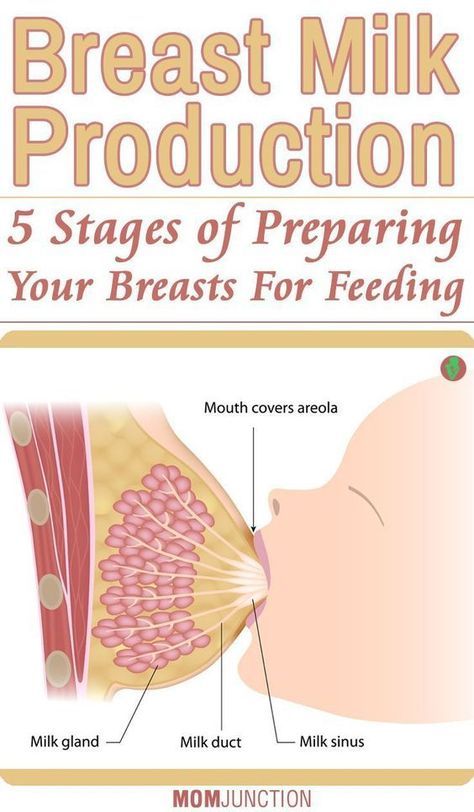
If you're unsure that your baby is consuming the right amount of breast milk, you should consult your pediatrician for more advice.
Formula feeding and amounts by age
As well as being more convenient for many parents and more accessible for dads, formula-fed babies can also be easier to feed the correct amount as you can more effectively measure how much they're eating.
Generally speaking, formula-fed babies tend to take fewer feedings than breastfed babies and will eat more in a single feed, but this might be different for your own baby!
The American Academy of Pediatrics recommends that your baby has around 2 1/2 oz of formula per day for every pound of body weight - a baby who weighs ten pounds will therefore need 25 ounces in a 24-hour period, for instance.
To make it easy, we've put together a table with the recommended amounts of formula according to your baby's age:
| Age | Time between feedings | Ounces per Feeding |
| 0-2 weeks | 2-3 hours | 1 to 2 ounces |
| 2 weeks - 2 months | 3-4 hours | 2-3 ounces |
| 2-4 months | 4-5 hours | 4-6 ounces |
| 4-6 months | 4-6 hours | 5-8 ounces |
Once again, you might find that your baby can't quite drink as much formula as this table says, or that they cry for more milk between feedings.
Ultimately, you should always follow your baby's lead when it comes to their basic needs - they know how much milk they need to drink better than a chart does! Therefore, just use these tables as a rough guide that you can adjust later down the line if you need to.
Solid food feedings and amounts by age
Once your baby is 6 months old, they'll have reached some of the developmental milestones that mean they can start eating solid food. These include sitting up independently, bringing food to their mouth, controlling their head and neck, and successfully swallowing food by pushing it to their throat.
As you already know, you can't feed your baby a full three-course meal right off the bat - you need to start slow with foods that are easy for them to eat and digest.
For instance, you can try starting them off with mashed or pureed single-ingredient foods such as mashed apples or carrots.
This is also the time when allergies might come to light, so be mindful of what you're feeding your baby in case they have any kind of reaction, and consult your doctor if you notice anything wrong.
Here is a table of how much solid food you should give your baby at each age - bear in mind that these amounts should be supplemented with breast milk or formula, and that the amount of food you give them will depend on this ratio.
| Age | Type of food | Amount of food | How often |
| 6-8 months | Fruit and vegetables | 1-4 tbsp | 1-2 times per day |
| 6-8 months | Cereal | 1-4 tbsp | 1-2 times per day |
| 8-9 months | Fruit, vegetables, cereals | 5-10 tbsp | 2-3 times per day |
| 8-9 months | Proteins | 2-6 tbsp | Each day |
| 9-12 months | Fruit, vegetables, grains | Up to 1/2 cup | 2 times per day |
| 9-12 months | Dairy | Up to 1/2 cup | Each day |
| 9-12 months | Protein | Up to 1/2 cup | Each day |
However, as any parent can tell you, babies rarely eat exactly the right amount whenever they're told! Your baby's appetite will likely fluctuate each day, and it's important to not force food down them when they aren't feeling hungry.
Instead, you should teach them to trust their own feelings and instincts, so that they understand their own hunger better when they grow into childhood.
If you want an idea of how to work foods like this into your baby's diet, here's an example of what your baby might eat in a day:
| Meal | Food | |
| Breakfast | Oatmeal with pureed fruit | |
| Lunch | Lentil soup with boiled carrots | |
| Dinner | Mashed potato with tuna mayo | |
| Snacks | A couple of tablespoons of yogurt, smoothie, or applesauce |
Of course, the menu is up to you, and you may even find that your baby can eat slightly altered versions of dishes that you might eat yourself!
Baby feeding - key takeaways
When it comes to feeding your baby, things can get a little complicated; from choosing between breast milk and formula feeding to knowing how much milk to feed your baby and keeping on top of the milk supply, it isn't always simple! But don't worry - here are the most important points we've talked about today when it comes to feeding your little one:
-
Your baby's stomach starts out tiny and starts to grow quickly, so expect to start with more frequent, smaller feedings before moving onto larger amounts with longer stretches of time in between
-
Formula-fed babies on average take fewer feedings per day than breastfed babies and will eat a little more in a single sitting
-
Babies can begin eating some solid foods from 6 months, but you should start slow with pureed single-ingredient foods to work out their likes and dislikes, as well as any potential allergies
-
You should pay attention to your baby's unique needs and feed them when they're hungry - while tables can be useful to give you a rough idea of how much babies eat on average, it's fine if they don't 100% apply to your little one's own habits!
Most asked questions about baby feeding
How many ounces of pumped breastmilk should a newborn eat?
When your baby is first born, their stomach is only the size of a marble, stretching out over the first few weeks of their life.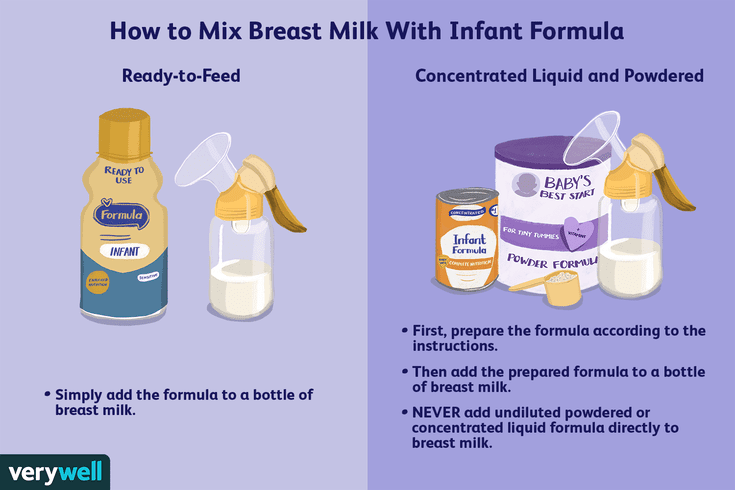 This means that they should be fed little and often - around every two or three hours. If you're bottle-feeding your newborn baby, you should only give them 0.5 ounces of breast milk during each feeding for the first few days of their life, gradually increasing the amount as their stomach capacity (and hunger) grows.
This means that they should be fed little and often - around every two or three hours. If you're bottle-feeding your newborn baby, you should only give them 0.5 ounces of breast milk during each feeding for the first few days of their life, gradually increasing the amount as their stomach capacity (and hunger) grows.
How do I know if my baby needs more ounces?
A general rule of thumb is to feed your baby when they're hungry and crying out for more food- though tables and statistics can be helpful, your baby is unique, and you should always put their needs above following a strict routine that may only work for some parents.
If your baby needs more milk, there's a good chance they'll let you know by crying more frequently. Remember, a hunger cry is rhythmic and repetitive, almost like a siren, and your baby may also turn to your breast or raise their hand to their mouth.
How do you calculate how many oz a baby should drink?
The recommended milk intake depends on whether they're drinking breast milk or formula.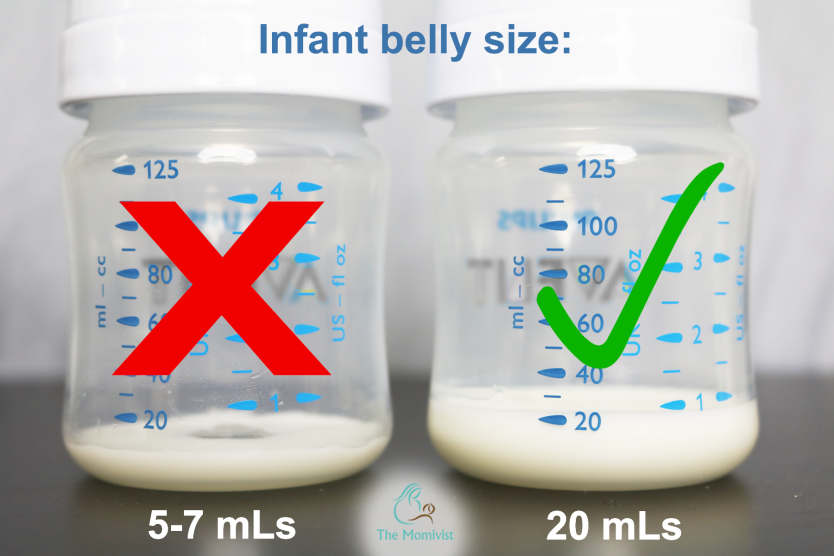 For formula-fed babies, the American Academy of Pediatrics states that your little one should drink two and a half ounces of formula for every pound of body weight. When it comes to pumped breast milk, you might find that your baby drinks this amount in more frequent, smaller feedings.
For formula-fed babies, the American Academy of Pediatrics states that your little one should drink two and a half ounces of formula for every pound of body weight. When it comes to pumped breast milk, you might find that your baby drinks this amount in more frequent, smaller feedings.
On the other hand, it can be difficult to figure out how much milk breastfed babies are drinking during each feed, so you may want to feed them according to their own natural rhythms and when they become hungry.
How much does the average 2-month-old drink?
At 2 months old, your baby will typically be drinking around 2 ounces of breast milk or formula during each feeding, and having each feeding every 3 or 4 hours per day. This adds up to around 12-16 ounces of milk per day!
However, if your own 2-month-old is drinking more or less than this, that doesn't mean that you need to worry. Every baby is different, and as long as they're healthy and have a good appetite, you don't need to worry too much about the exact amount they're drinking.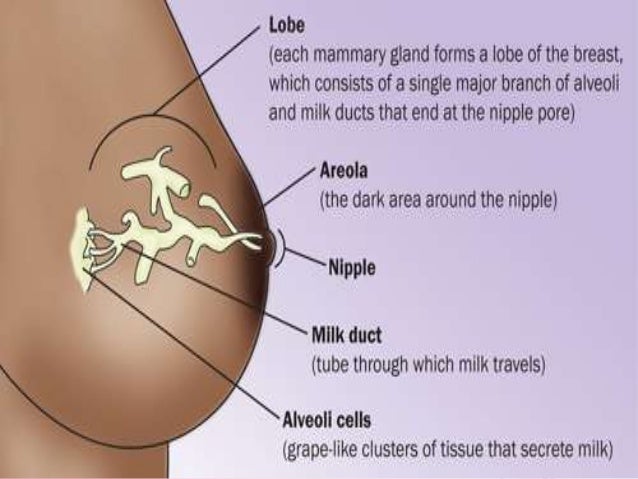 If you're concerned about their eating habits, you should contact your pediatrician for medical advice.
If you're concerned about their eating habits, you should contact your pediatrician for medical advice.
Is 6oz too much for a 2-month-old?
Generally speaking, a 2-month-old baby will drink about 2 ounces of milk per feeding, adding up to around 12-16 ounces of milk per day, so 6 ounces all at once may be a little too much for their stomach to handle.
But if your baby prefers fewer, larger feedings, then 6 ounces might make sense - at the end of the day, it's all about what works for your baby and your family, rather than what statistics and charts say you should do. After all, you know your little one best!
When should my baby eat 4 oz?
The amount of breast milk or formula your baby eats in a single feed will increase as they grow and develop. For instance, while a newborn can only stomach a teaspoon or so of milk during their first feeding, this will increase to 2 whole ounces by the time they're 2 weeks old!
Broadly speaking, your baby will be able to eat 4 ounces per feeding by the time they're 3 or 4 months old, but don't take this number too seriously.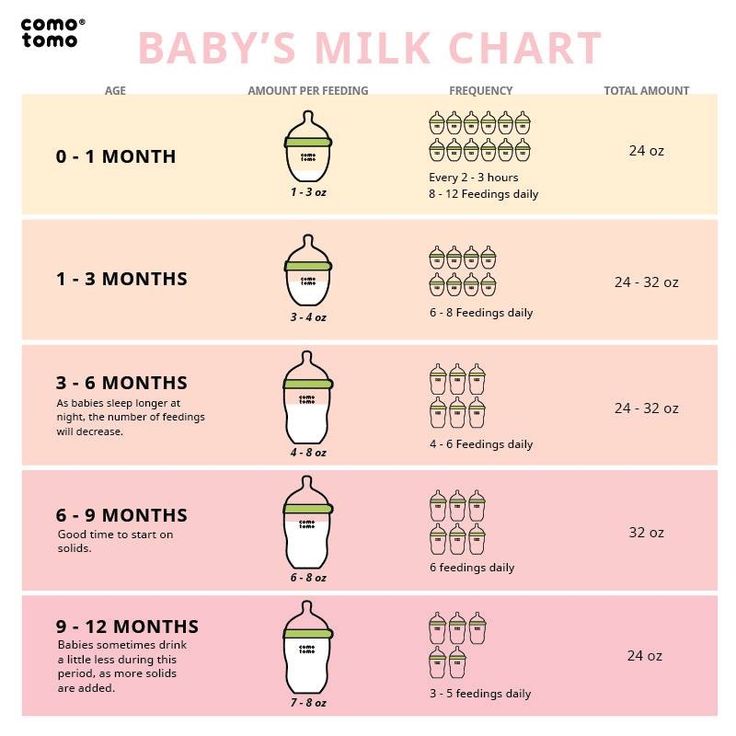 All babies are unique, and while one parent might find that their 5-month-old can just about manage 4 ounces, another might discover that their baby wants more than this at 3 months!
All babies are unique, and while one parent might find that their 5-month-old can just about manage 4 ounces, another might discover that their baby wants more than this at 3 months!
How much milk should I be producing for a 3-week-old?
At 3 weeks old, your baby should be drinking around 2 ounces of milk per feeding every 3 or 4 hours, though your baby's milk intake might vary according to factors like their weight and whether they're drinking breast milk or formula. In terms of milk production, you should aim to pump between 25 and 35 ounces of breast milk within a 24-hour span if you're exclusively pumping.
However, it's worth noting that this isn't possible for every woman, and that not all parents have access to breast milk, so don't worry too much about what you 'should' be doing. All that matters is that your baby is happy and healthy, whether that's through breast milk or formula!
Is it OK to formula feed instead of breastfeeding?
Absolutely! Here's a saying we love to use instead of breast is best: fed is best. Many women struggle to breastfeed for a wide range of reasons, while single fathers or adoptive parents may not have the option at all. There are many benefits to breastfeeding, but your baby being healthy is what's important - if you need formula to reach that goal, then definitely use it.
Many women struggle to breastfeed for a wide range of reasons, while single fathers or adoptive parents may not have the option at all. There are many benefits to breastfeeding, but your baby being healthy is what's important - if you need formula to reach that goal, then definitely use it.
Is it OK to feed a swaddled baby?
Absolutely! If your baby is waking up from a nap hungry, or wanting to be fed before she goes to sleep, leaving them in the swaddle makes the most sense for many parents and is perfectly safe to do. In fact, swaddling your baby before you feed them makes sense for many parents as it helps them to calm down, which is especially useful if they're going to be put to bed right after!
If you're looking for a swaddle to help soothe your newborn to sleep, we can't recommend our own Zen Neo swaddle pod highly enough! A womb-like shaped pod that helps to ease your baby's transition to the big new world around them, this swaddle also features a gently weighted pad to mimic your soothing touch and help your little one fall asleep all by themselves.
Should I swaddle my baby before or after feeding?
This really depends on what makes sense for your own baby! For instance, while some babies may become too sleepy and cozy to eat after they've been swaddled, others may become agitated if you try to swaddle them right after they've been fed. Every baby is different, and your swaddling habits will likely reflect this, so do whatever works best for you and your little one!
Should I unswaddle for dream feed?
If you don't already know, a dream feed is when you feed your baby while they're still pretty much asleep, but just awake enough to be able to latch on and drink. A well-timed dream feed can prevent other wakeups throughout the night, meaning more sleep for both you and your baby - if you want to know more, check out our blog all about dream feeds!
Because you want your baby to remain mostly asleep during the feeding, you'll want to disrupt them as little as possible - therefore, removing them from the swaddle likely isn't the best move, as it's almost certain to wake them up! On the other hand, if they aren't awake enough to latch, you may want to unswaddle them as a way of waking them up a little more - it's all about finding the right balance of awake but drowsy.
You Might Also Like
https://www.nestedbean.com/blogs/zen-blog/when-do-babies-start-rolling-over
https://www.nestedbean.com/blogs/zen-blog/baby-sleeping-on-side
https://www.nestedbean.com/blogs/zen-blog/7-ways-to-make-your-baby-smarter-before-birth
Other Resources
https://www.healthychildren.org/English/ages-stages/baby/feeding-nutrition/Pages/How-Often-and-How-Much-Should-Your-Baby-Eat.aspx
How Much Should a Newborn Baby Eat
Search Support IconSearch Keywords
Home ›› How Much Milk Should a Newborn Baby Drink?
Home ›› How much milk should a newborn baby drink?
↑ Top
Like every new mom, you're probably wondering, "How often should a newborn eat?" and “How many milliliters does a newborn baby drink at a time?”. A mother's body is designed to provide her baby with all the nutrients she needs, but every mom needs practical advice and confidence when it comes to how much milk a newborn should drink. nine0003
nine0003
Whether you are breastfeeding, bottle feeding or a combination, here you will find all the information you need to know about how much food your baby needs to grow and develop properly.
Signs indicating that the child is hungry
Every mother has a wonderful maternal instinct, but we cannot guess the child's desires from the first time. Over time, you will learn your child's unique gestures and body movements, as well as signs that he is hungry. In the meantime, here are some of the most common signs that a child is hungry:
- turns head towards your breast or bottle;
- clenches;
- puts pens in mouth;
- pouts, smacks or licks lips.
If your child is showing any of these signs, they may be trying to tell you it's time to eat. Ideally, your baby should be fed on demand when he is hungry. If you're breastfeeding, on-demand feeding is a good way to keep your milk supply going as your body will naturally respond to your baby's needs and continue to produce the required amount of milk. Bottle-feeding on demand can also be beneficial for your baby, as it allows him to self-regulate his feeding needs. nine0003
Bottle-feeding on demand can also be beneficial for your baby, as it allows him to self-regulate his feeding needs. nine0003
How much breast milk should a newborn drink?
So, how much should a newborn baby eat? A remarkable feature of each child is its uniqueness, so it would be wrong to feed the baby strictly according to the instructions. Don't panic if the recommendations below don't fit your own feeding schedule, but please contact your healthcare provider or pediatrician if you have any questions.
Although every baby is different, newborns typically eat every two to three hours, for a total of 8 to 12 meals a day. nine0003
How many milliliters does a newborn baby drink? At the very beginning, your body will only produce a small amount of yellowish and thick breast milk called colostrum. This milk is an ideal source of nutrients that your newborn needs, in addition, it has many immunological components. 1
How much milk does a newborn baby drink? Infants drink 30-60 ml per feeding, while this volume increases to 60-90 ml by two weeks of age.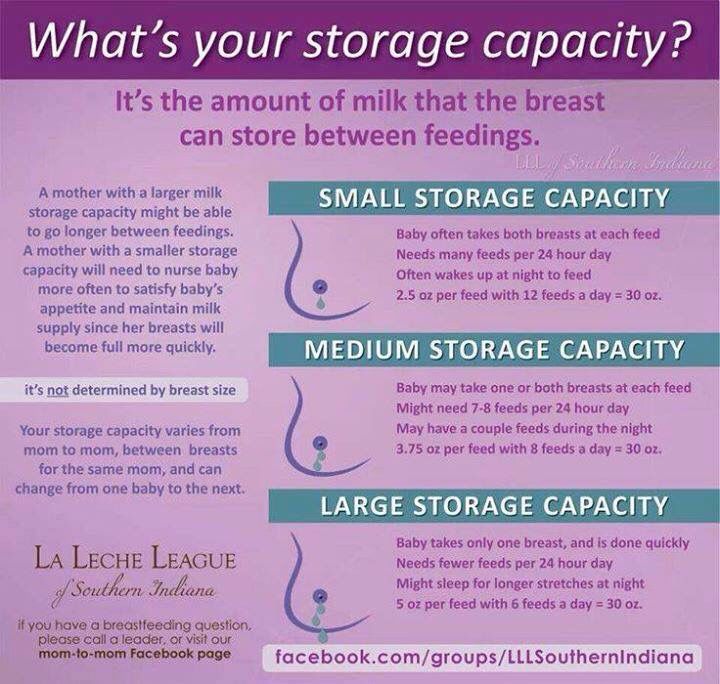 So don't worry if you don't feel like your body is producing much milk in those first few days after your baby is born! Feeding times will also vary, ranging from 10 to 30 minutes at the very beginning and then gradually increasing as your baby grows.
So don't worry if you don't feel like your body is producing much milk in those first few days after your baby is born! Feeding times will also vary, ranging from 10 to 30 minutes at the very beginning and then gradually increasing as your baby grows.
How much breastmilk the baby takes if bottle feeding
If you choose to bottle feed your baby from time to time, do so at the same intervals and for the same period of time as if you were breastfeeding. Pumping is a great option for breastfeeding your baby. It will allow you to separate from the baby if necessary and at the same time retain all the benefits of breastfeeding. nine0015
It's also important to get a bottle that helps make bottle feeding more natural for both you and your baby. For example, take a look at this Philips Natural bottle. Its wide, physiologically shaped nipple promotes a natural latch that is identical to that of a mother's breast, making it easier to alternate between bottle and breastfeeding.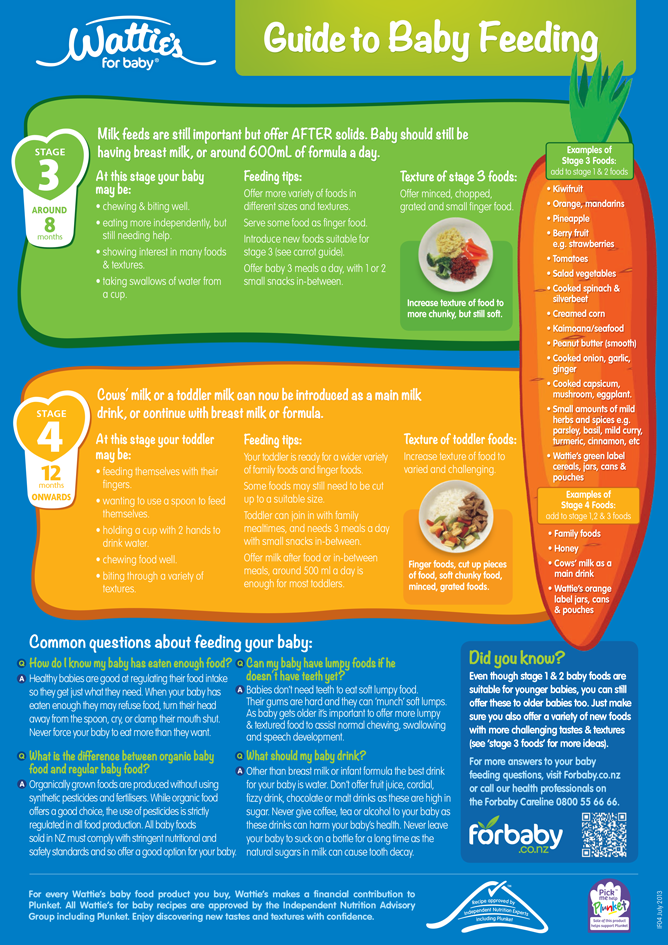
Philips Avent
Natural Baby Bottle
SCF033/27General assessment /5
- Reviews reviews reviews
-{Discount -Value}
the child is full
How to understand that the child is already full? When breastfeeding or bottle feeding, look out for the following signs that may indicate that your newborn baby is full:
- baby closes his mouth;
- turns head away from bottle or breast;
- handles are not clenched and relaxed;
- falls asleep quickly.
If your baby shows signs of fullness, stop breastfeeding or bottle feeding, even if the bottle is not yet empty.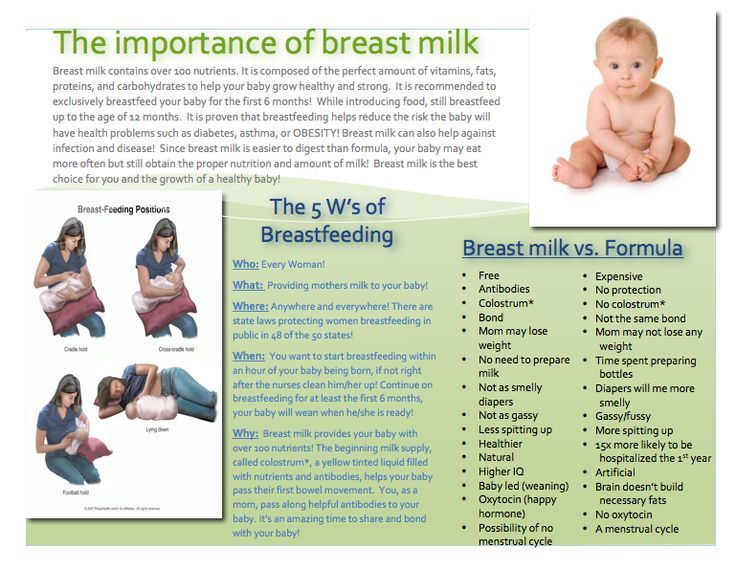 2
2
The right choice for you and your baby
Remember that every child is different and no one is as close to you as you are. Choose the feeding option that works best for you and your newborn, whether breastfeeding, bottle feeding, or a combination. nine0003
I understand
You are about to visit a Philips global content page
Continue
You are about to visit the Philips USA website.
I understand
What is normal breastfeeding? | Interview with Dr. Jacqueline Kent
It can be difficult for new mothers to understand if breastfeeding is going well, so we decided to ask the expert if it is possible to talk about the norms when it comes to breastfeeding. nine0008
Share this information
Dr Jacqueline Kent , Research Fellow , Hartmann Human Lactation Research Group:
Jacqueline joined the University of Western Australia research group in 1986 and received her PhD in 1999. She is currently researching the biochemical and physiological aspects of breast milk synthesis and release in search of scientific information to help mothers breastfeed longer. nine0003
She is currently researching the biochemical and physiological aspects of breast milk synthesis and release in search of scientific information to help mothers breastfeed longer. nine0003
Dr. Jacqueline Kent and her colleagues have been studying breastfeeding for many years. As it turned out, for all mothers and babies, this process occurs in its own way.
What were the most surprising results of your research?
Variety. It turns out that the limits of the norm are extremely wide.
We are used to textbooks that say that an infant should eat 8-12 times a day and gain 150 grams per week. But babies don't read textbooks and do things their own way! Some gain weight more slowly, others very quickly. nine0003
We looked at infants aged one to six months who were exclusively breastfed. As our studies have shown, on average, a child is breastfed 4 to 13 times a day, and the duration of one feeding varies from 12 minutes to 1 hour. 1
How much milk do breastfed babies usually consume?
According to our research, the amount of milk consumed by baby
ranges from 54 to 234 ml per feeding.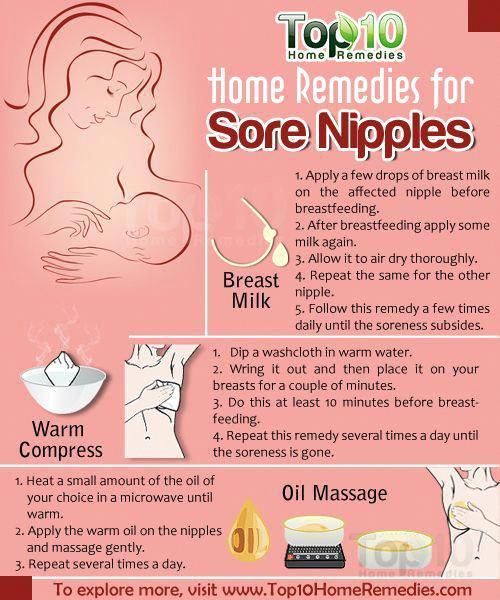 nine0056 1
nine0056 1
Sometimes it seems to the mother that the baby has eaten well, but when weighed, it turns out that he ate very little milk. And it happens the other way around: the child is distracted, breastfeeds for only a few minutes and still eats 100 ml of milk. Even if the baby is restless, this does not mean at all that he is malnourished.
All babies are different, but all of them somehow get as much milk as they need. One needs 500 ml of milk per day, while others eat up to 1356 ml!
By the way, boys on average eat 76 ml more milk per day than girls. The main thing is that you have enough milk, and the baby will decide when and how much he will eat. nine0003
Should I offer my baby a second breast?
I advise offering the second breast to the baby after the first has been completely emptied. If he accepts it, then he hasn't finished eating. If not, don't worry. Let the baby decide for himself - only he knows when he is full. According to our research, 30% of babies get enough milk from one breast, 13% eat from two breasts at each feed, and 57% from time to time. 1
1
How do you know if a baby is getting enough milk? nine0024
In my experience, mothers often blame themselves for not producing enough milk. Ask yourself: Is my child growing? Is he putting on weight? Is he cheerful? Is his skin healthy? How often does he get diapers dirty? If the answer is “yes”, then the baby is getting enough milk, no matter if he eats a lot or a little.
What is the most common misconception about breastfeeding?
Mothers usually think that the older the child gets, the
more often you need to feed him and the more milk he will eat. They are often surprised to learn that between the 4th and 26th weeks, total milk production normally does not change. 2
In the first few months, the baby grows very fast and his metabolism is accelerated. The milk that the child consumes during this period is almost completely used for growth and maintenance of metabolism.
Between the ages of three and six months, metabolism slows down and growth slows, so the same amount of milk is sufficient for the baby.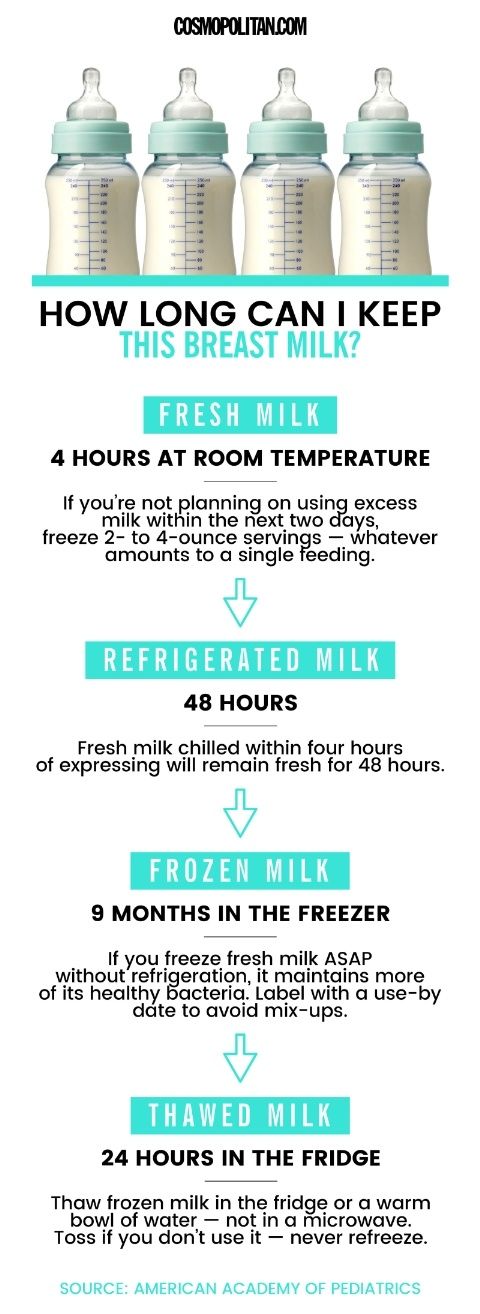 In other words, the baby does not have to consume more and more milk as they grow older. On the contrary, feedings become shorter and less frequent, but at the same time the child receives the same amount of milk, because he suckles better. nine0003
In other words, the baby does not have to consume more and more milk as they grow older. On the contrary, feedings become shorter and less frequent, but at the same time the child receives the same amount of milk, because he suckles better. nine0003
Do studies say anything about the age at which breastfed babies start sleeping through the night?
Most babies need to be fed at night.
The baby's stomach is not large enough to go all night without a feed, and breast milk is digested very quickly. Therefore, it is natural for the baby to wake up at night - and this usually continues for at least the first six months. Feeding at night is normal. When you feed your baby at night, do not even hesitate - all over the world at this moment other mothers of babies of the same age are doing the same. Be patient - it usually only lasts a few months. nine0056 1
What worries new mothers the most during the first few weeks of breastfeeding?
The most common concern is whether the baby latch on correctly, sucks well, and is full during feeding. Often mothers also worry about sore nipples. The main thing is to find the right position for feeding from the very beginning and ensure that the baby is latching on correctly. Practice shows that this significantly affects the flow of milk and the convenience of feeding. nine0003
Often mothers also worry about sore nipples. The main thing is to find the right position for feeding from the very beginning and ensure that the baby is latching on correctly. Practice shows that this significantly affects the flow of milk and the convenience of feeding. nine0003
What breastfeeding symptoms should be of concern?
Milk production usually returns to normal levels two weeks after delivery. If the child does not begin to gain weight on the fifth or sixth day of life, it's time to sound the alarm. You should contact your doctor to make sure that milk is being produced and that its composition is changing from colostrum to mature breast milk.
What advice would you give to a new breastfeeding mother?
Try to ensure skin-to-skin contact with the baby as soon as possible after birth. If possible, feed the baby within the first hour of life, or at least put him to the breast. As soon as possible, consult a specialist to correct the position and grip of the breast during feeding and thus avoid damage to the nipples. nine0003
nine0003
Feed frequently. Young mothers do not immediately succeed in correctly recognizing the signals that the child gives. Be sure to feed your baby on demand, and not at set intervals. Offer the breast as soon as you notice any signs of hunger - as a rule, the baby suckles better when he is calm. If he cries, it is more difficult for him to take the breast. If you are not sure what the child wants, offer him the breast. He decides whether he wants to eat or not.
To learn more about Dr. Kent's research, download infographic "How to determine the limits of the norm when it comes to breastfeeding" or see it below.
Literature
1 Kent JC et al. Volume and frequency of breastfeedings and fat content of breast milk throughout the day. Pediatrics . 2006;117(3): e 387-395. - Kent J.S. et al., "Amount and frequency of breastfeeding and fat content of breast milk during the day." Pediatrix (Pediatrics).


